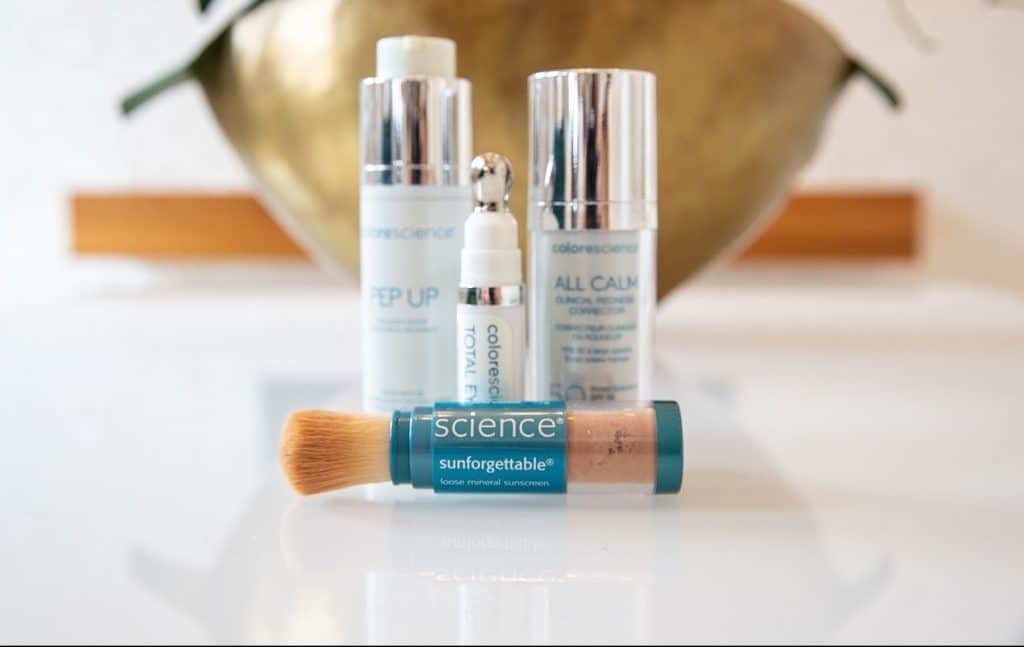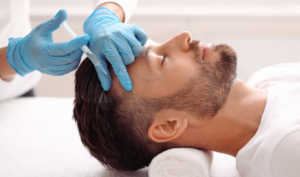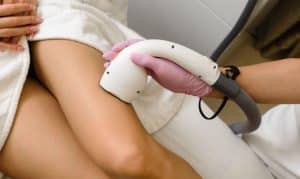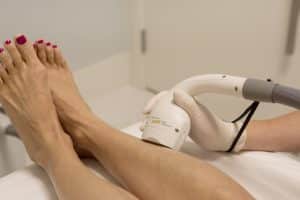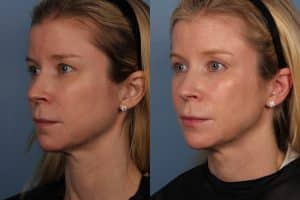As long-time fans of Colorescience skincare, we were thrilled to have the opportunity recently to chat with Patricia Boland, VP of Research and Development at Colorescience. We’ve been inspired by the passion of Patricia and her team as they pursue their mission to protect and defend your skin with advanced, all-mineral formulations. Recent research has strongly suggested that we should be steering clear of all chemical filters in SPF products, making our discussion with Patricia even more timely. Read on for her take on this important topic, her approach to product formulation, and much more as she speaks with Vanessa Grutman, Business Director at Project Skin MD.

Hi Patricia, thank you for joining me! Let’s begin with your role at Colorescience – what has your journey there been like?
It’s been such a meaningful part of my career. I hit my seven-year mark last September. I’ve been in product development my whole career, but it was so exciting to start at Colorescience when I did because we were in the midst of shifting our mission. We essentially initiated a rebirth of the brand: focusing not only on SPF and makeup as we had in the past, but starting to put together formulations that combined things like SPF, advanced treatment, and therapeutic colour correction.
You were previously in charge of product development at Laura Mercier – how is product formulation different at Colorescience?
It is very different. Laura Mercier was retail and we were focused on perfecting the look of womens’ faces from an immediate beauty standpoint. I had to create elegant formulations with immediate rewards. With Colorescience, we are so in tune with our physician partners and patients that the focus is more on long-term skin benefits. We understand the necessity of immediate colour correction, but there is the other piece of sun protection and creating cosmetically elegant and appealing formulations that will not only protect but also restore the skin. It is so meaningful to me.
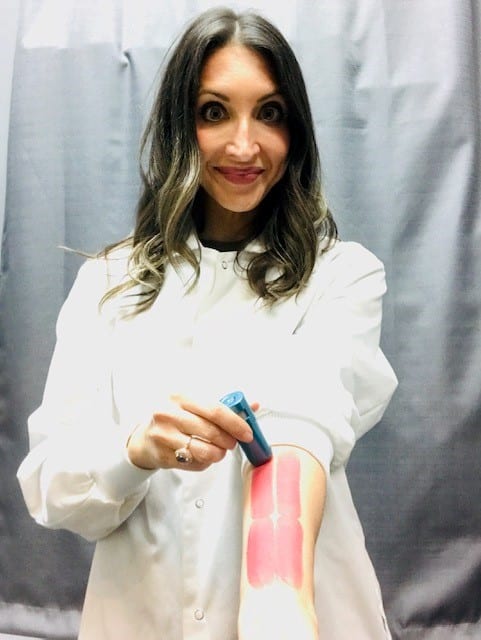
What is your motto when developing new products?
My favourite part of what I get to do is the initial ideation phase. Sometimes it starts from a need coming from consumers or our physicians. Sometimes it comes from getting a sneak peek of raw ingredient and its benefits and we think, “We need to do something with this!” It always starts with the patient in mind and the end result that we want to pass on to them. How do we do it in the safest way? What are the other benefits that we can also provide that are meaningful? From there we start looking for ingredients that have strong clinical data and we put together a “paper formula” with the ingredients we want to combine. For example, with Total Eye we had 3 different formulations in mind: we had a benchmark for the colour we wanted, one for the texture and one for the brightening and reflective effect. We knew we also wanted it to be all mineral, so it took many attempts to combine all those benefits into a single product with a package that would facilitate consumer compliance. I think we nailed it!
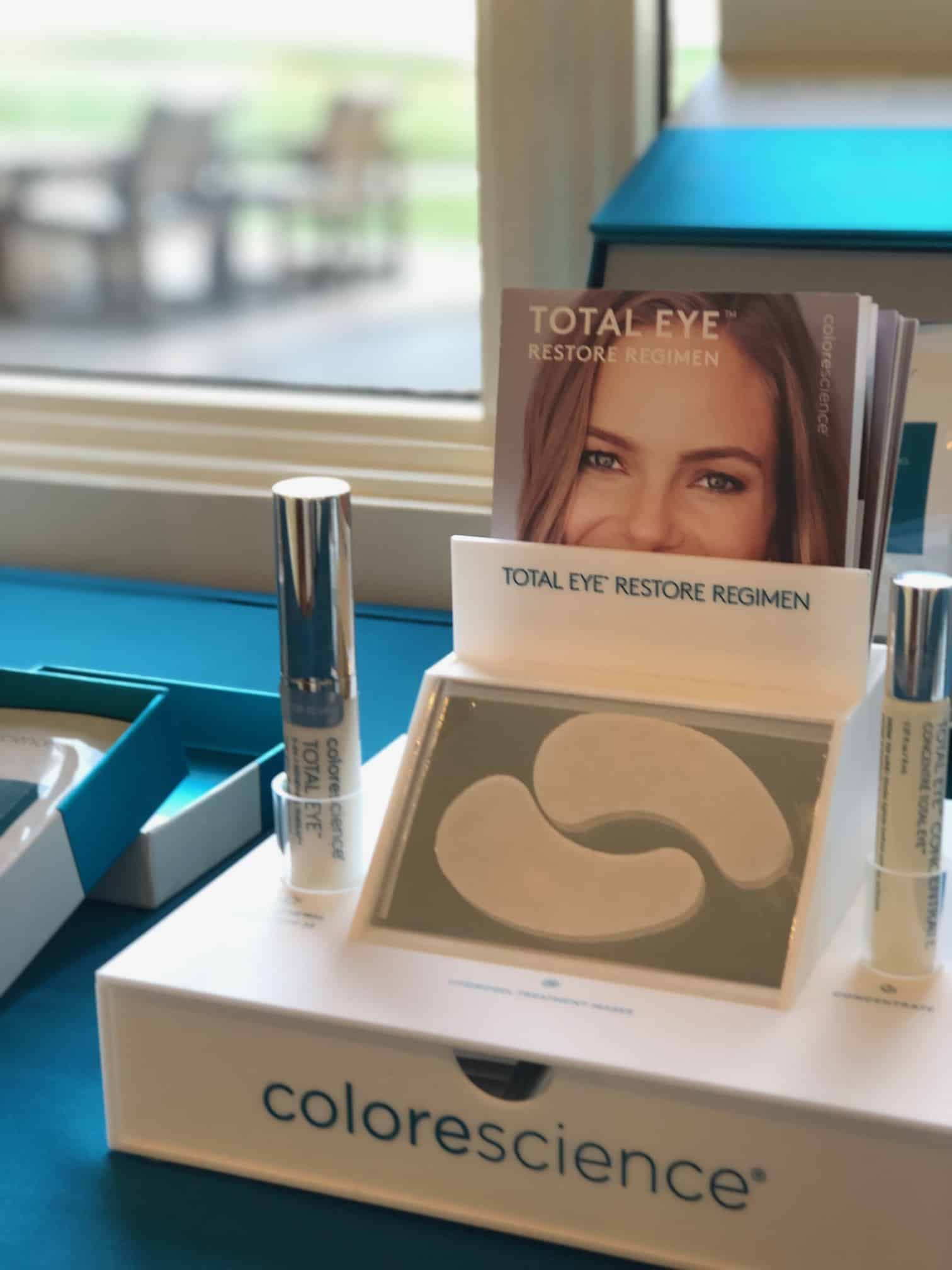
Colorescience proudly reached the “One Million Lives Protected” milestone in 2019. Congratulations! I got the opportunity to see a really moving video that your VP of Finance had prepared to highlight this journey. As the women behind the formulations, how does it make you feel to know that your products are not only being purchased but applied on the skin (which is the ultimate goal)?
It makes me very emotional and proud of what we’re doing as a brand and as a team – the fact that we’ve been able to create an entire platform of products where we focus on SPF and broad-spectrum protection but also pollution, high energy, heat. We now know that reapplication is key in skin cancer prevention so we’ve been trying to be thoughtful in creating products that will facilitate that behaviour. We’ve changed people’s relationship with their SPF by creating mineral formulations that don’t give them any reason not to be compliant. The fact that our VP of Finance created this video shows you how we are all passionate and so dedicated to this mission of saving lives through safe sun protection. The impact is so much bigger than what we think.
A conversation around Colorescience wouldn’t be complete if we didn’t talk about chemical vs mineral filters used in sunscreens. The recent FDA findings on chemical filters systemic absorption is worrisome to say the least – can you share your perspective on it?
The first impact of chemical filters found in sunscreen, such as oxybenzone and octinoxate, was recently observed on marine life and the resulting degradation of the ecosystem such as bleached corals. Hawaii was the first state to ban the sale of sunscreens with coral-harming chemicals and that was the first eye opener. The FDA (Food & Drug Association) wanted to investigate the impact on humans and did a study last year looking at human systemic absorption of these chemical filters. The article published in JAMA (Journal of American Medical Association) shows the four most commonly used filters being present in the bloodstream in alarming concentrations after a single application.
In September of last year, and has a result of this investigation, the FDA has classified sunscreen filters in three categories:
- GRASE (generally recognized as safe and effective).
This category only includes zinc oxide and titanium dioxide. These are the only two filters we have ever used at Colorescience, so knowing this was highly rewarding from an ethical standpoint for us.
- Known safety issues.
This category includes PABA and Trolamine Salicylate. Studies have shown that the risks of these two ingredients outweigh their benefits.
- Additional safety evidence is needed.
This third and newest category took everyone by surprise – all 12 known chemical filters were in there. For me personally, this was shocking because we have all used chemical filters at one point or another in our life.
(Note: You can read more about the FDA proposed regulation here.)
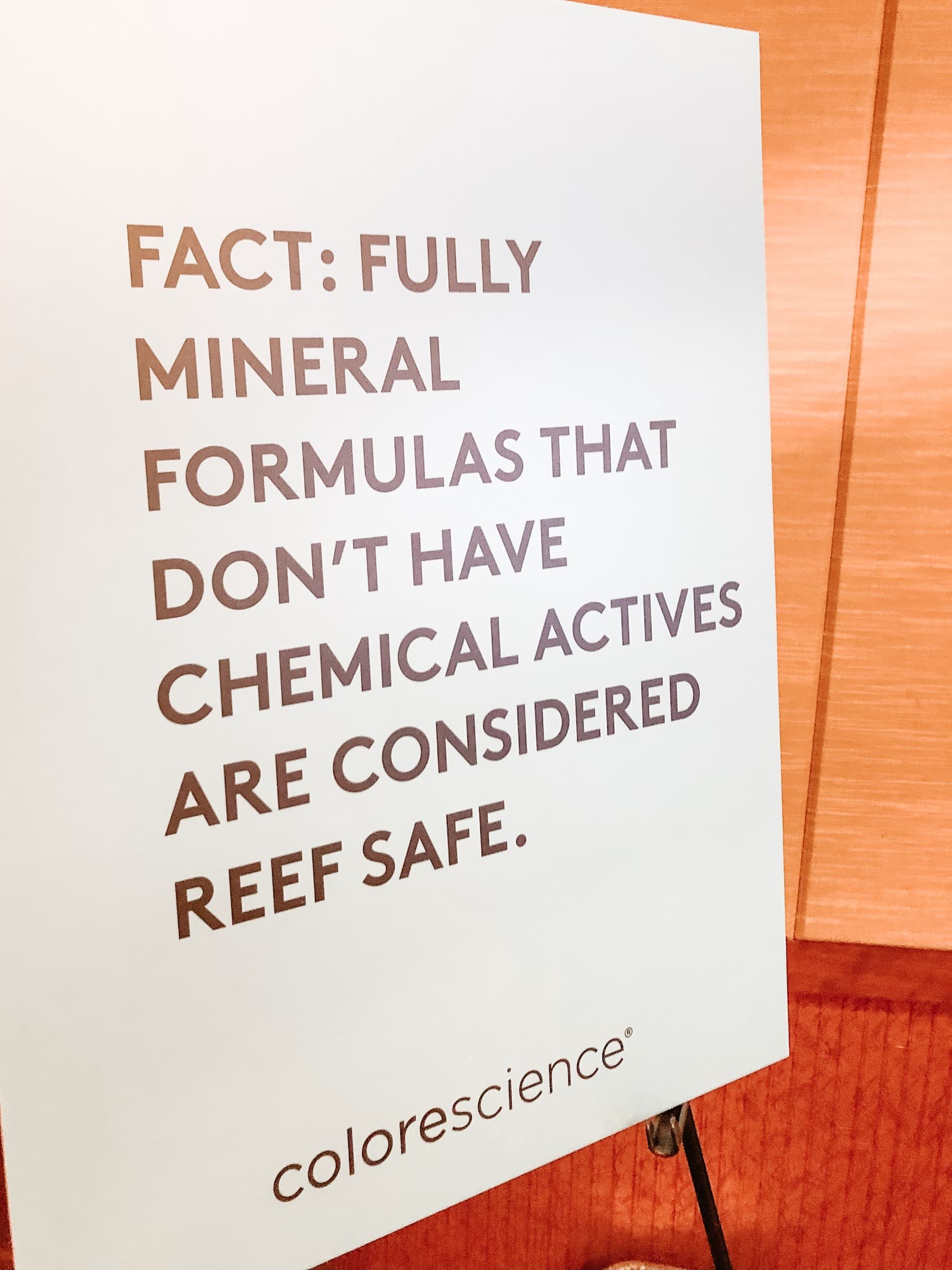
This new data is meaningful for everyone and is leading us to an important time in the world of sunscreens. We now know these chemical filters are making their way into our bloodstream in quantities over the limit of what is considered safe. Additionally, a couple of them were still present for up to three weeks after a single application. It’s alarming and we clearly need more information on this. What’s concerning is that we don’t know yet the real extent of this data, meaning we don’t know what chain-reaction these chemicals are creating in humans. I found a couple studies on lactating mothers using chemical sunscreens, in which oxybenzone and octinoxate were found to be present in the breast milk of up to 85% of the subjects. It is passed down to our babies. This needs immediate action and I’m glad the FDA decided to look further into it.
For now, we’re happy that we can provide a safe, mineral option for consumers that are not wanting these chemicals in their body. We have always been fully mineral because zinc oxide and titanium dioxide not only have great broad-spectrum UV protection, but are so great and so well studied on sensitive skin and skin conditions such as acne, melasma, rosacea.
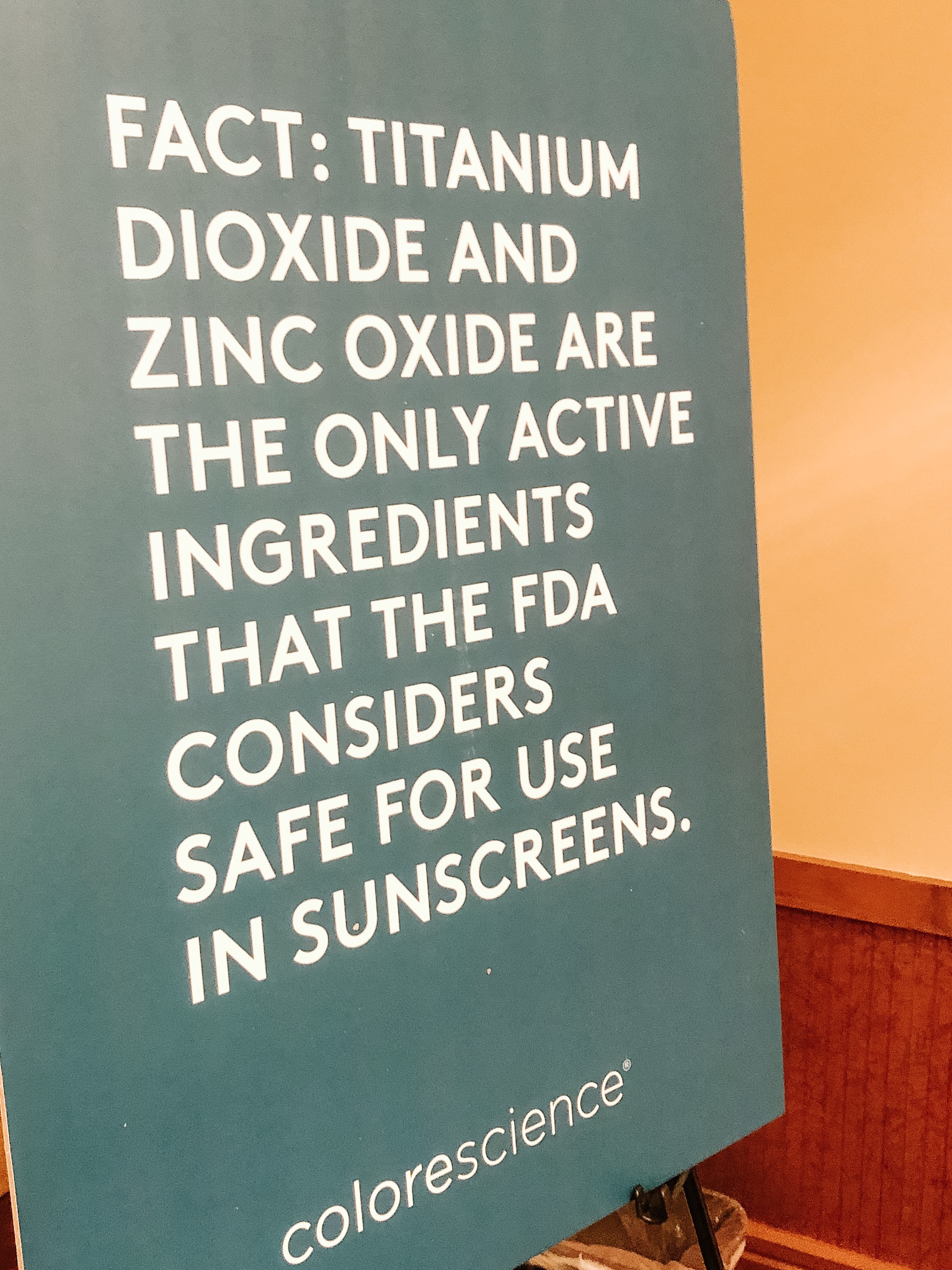
This new data is concerning but not yet widely available to the public. The medical community is faced with this constant dilemma of patient compliance. Is the potential risk associated with systemic absorption of chemical filters greater than the risk of getting skin cancer from not using sunscreens? Where do you stand on that?
Well, let’s be clear. We know the effect of melanoma; we know the statistics and how deadly it is. First and foremost, wearing a SPF is the priority; whether chemical or mineral. Compliance to sun protection remains key. However, consumers need to turn towards a mineral formulation when possible. Great formulations are now available, long gone are the days of pasty, chalky white sunscreens. I hope patients will see the benefits in sticking to a mineral based product. That said, the unknown about chemical filters worries me and is enough to convince me to stick to mineral.
Are there signs or symptoms of dangerous systemic absorption of chemical filters?
I haven’t seen anything published yet but this is the work that needs to be done. We hear anecdotal things like rashes, itchiness, etc. One of the good things about zinc oxide is that not only is it a great filter for UVA, some UVB and High-Energy Visible light (HEV), but it is also a great anti-inflammatory ingredient (hence its presence in diaper creams). Mineral sunscreens have so many great benefits – play it safe.
Do you anticipate Health Canada to follow the FDA in terms of the new sunscreen monograph regulations?
I would like to believe that when something as impactful as this is happening, that everyone stops and notices. It’s pretty meaningful so all safety agencies around the world are paying attention to see what will come next. I hope Health Canada will also take a stance on this.
You’re now incorporating Enviroscreen technology into your products – can you tell us more about what it does?
This is really a ground-breaking innovation. To me, it’s the Colorescience patented formulation approach that is delivering total protection across the entire light spectrum. Let me give you some background on why we developed Enviroscreen. Before, we were focusing primarily on UVA/UVB protection. But now we know that infrared light and HEV (blue light) emitted from devices – all these different parts of the spectrum – have energy and the ability to create free radical damage. It’s a reason why patients are coming in with more rosacea, inflammation, melasma and difficult conditions. We know there is a direct correlation with light exposure and damage resulting in visible aging. The additional piece now available includes pollution. We’ve studied the effect of pollution in combination with light exposure and saw that even more free radicals were formed.
Enviroscreen is basically zinc oxide with titanium dioxide patented in a multi-layer, multi-functional coating. Now these two ingredients always have some form of coating to allow better homogeneity throughout the formula. What we did different is we found a way, by working with a brilliant raw ingredient innovator, to maximize this coating to create a mesh trapping free radicals. What this means is that with the Enviroscreen technology we are reducing the number of free radicals actually formed in the skin. Our studies show an inhibition of free radical formation following light and pollution exposure; that’s a first!
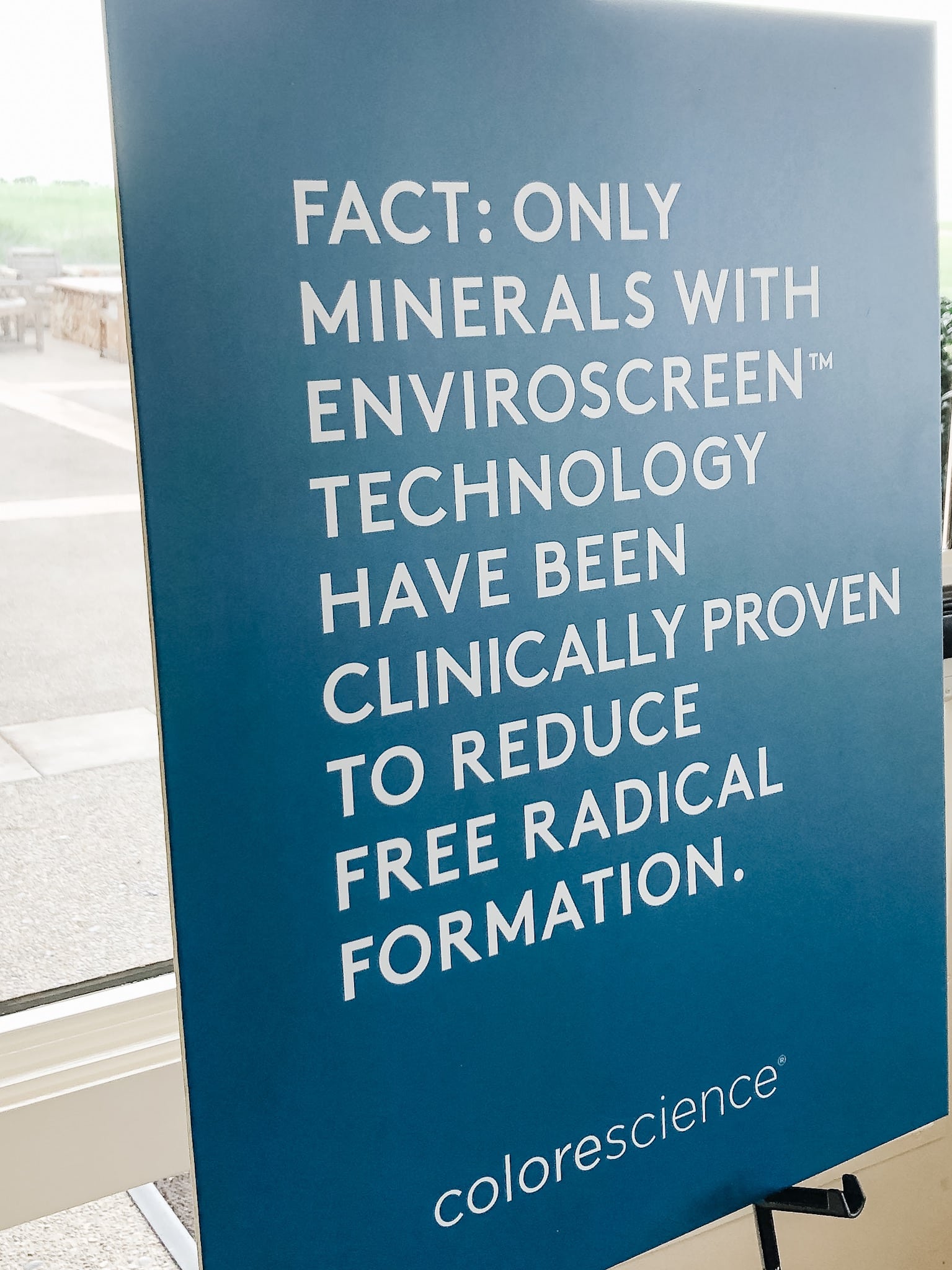
You tend to include antioxidants in your latest formulations, why?
We include advanced antioxidants because we know you can’t entirely stop the formation of free radicals. The antioxidants are there as a support mechanism to neutralize whatever was formed. What’s unique is that along with reducing the free radical formation, the Enviroscreen technology is boosting antioxidant (AOX) benefits. We studied the effect of UV on some of the most popular AOX. What we found is when these AOX are exposed to light, they are basically just being burned up (after the equivalent of 60-90 minutes in the sun). Therefore, your AOX protection is completely gone. The addition of AOX in the Enviroscreen technology preserves and boosts AOX benefits so their integrity is preserved under light exposure.
Which antioxidants do you prefer to include?
My favourite one is Vital ET: it’s a more bioavailable form of vitamin E with some strong data on soothing and calming inflamed skin, but also great on helping keeping the skin calmed pre/post sun exposure. The other ones we use are Infraguard (specific to Infrared in helping with heat exposure) and VitaKeylock which is a combo of 3 polyphenols where their results are exponentially better than when used on their own. We often refer to Advanced Antioxidants and that’s because we’re looking for things that have more than one benefit. In our exclusive formulations, we then combine these antioxidants with the Enviroscreen actives along with other beneficial ingredients such hyaluronic acid for retaining hydration.
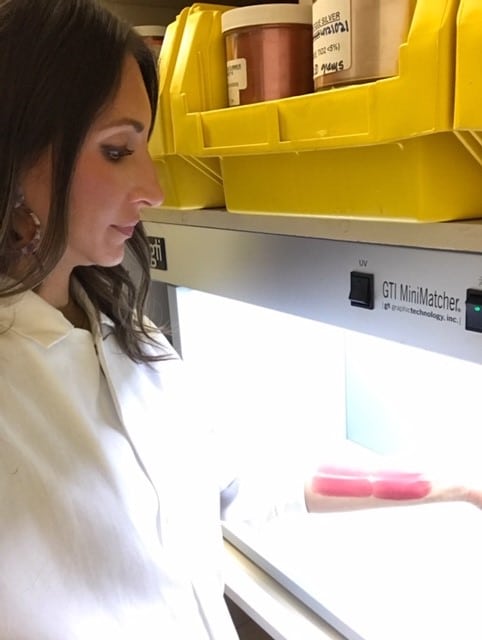
We and our patients LOVE that Colorescience is not using any dyes or chemicals to provide colour correction in their products. How do you achieve that?
The secret is in iron oxides. We’ve always only used iron oxides for color correction (found naturally in nature) because they are very heat/light stable, non-migrating and not phototoxic.
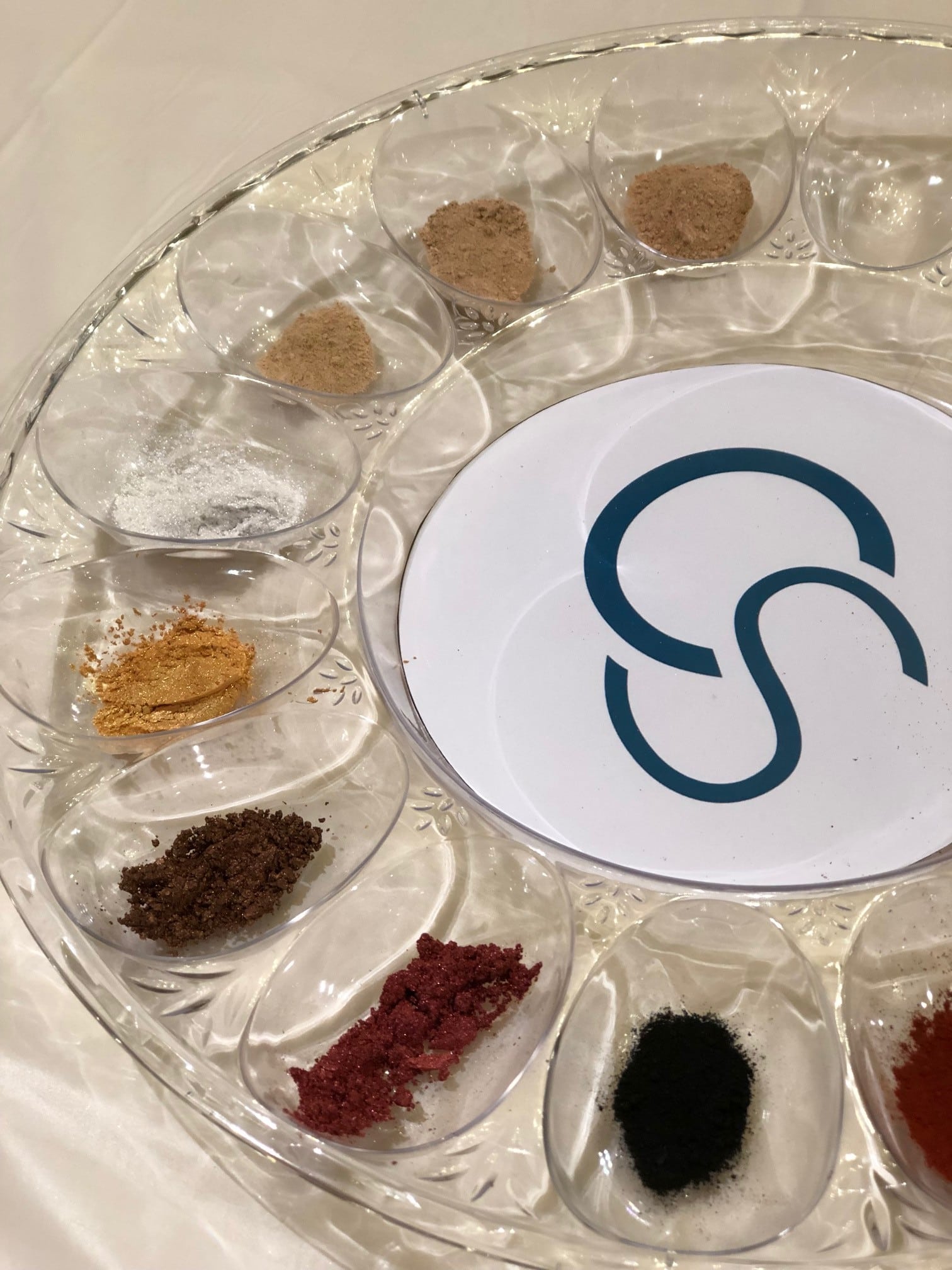
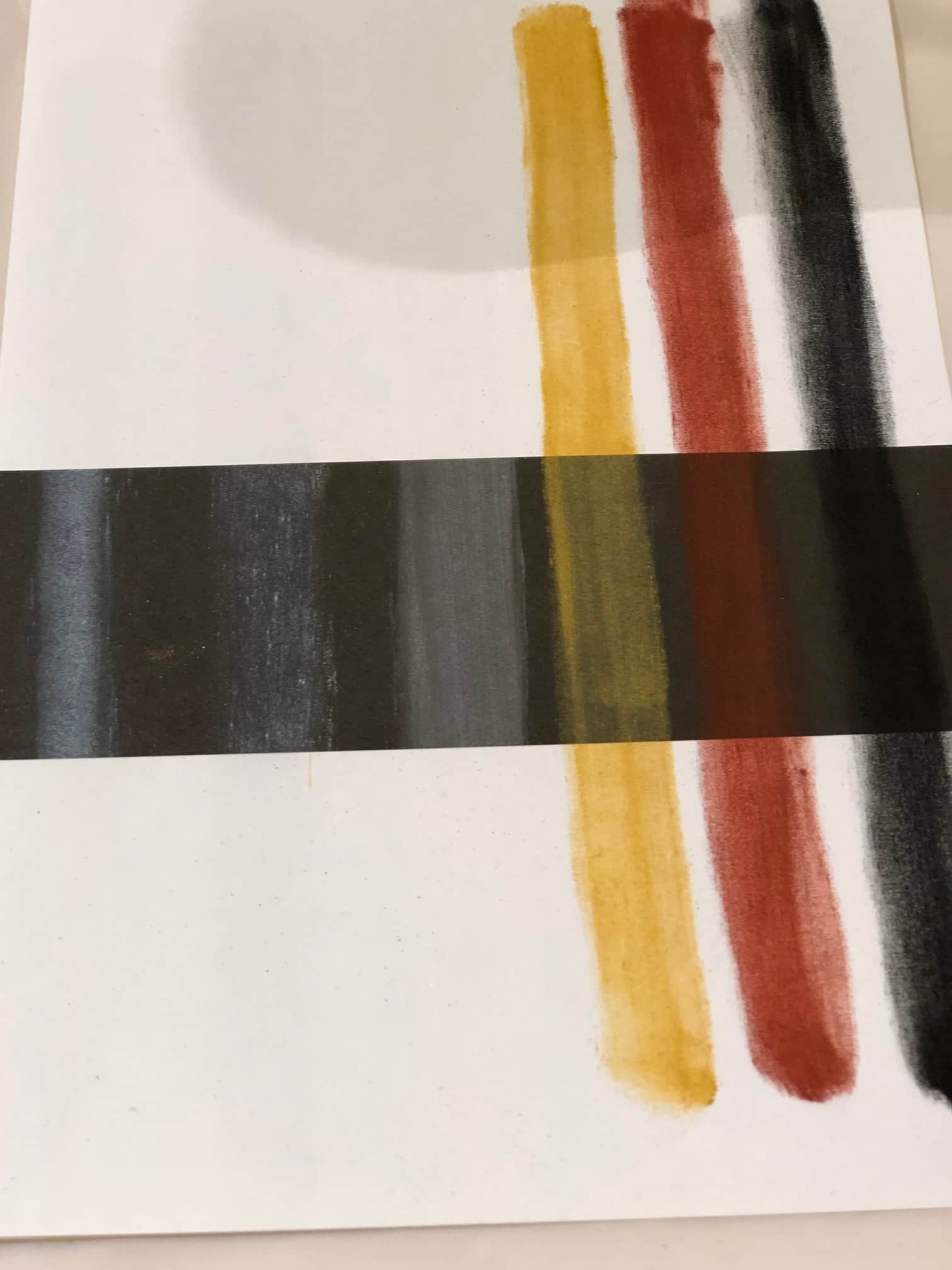
We recently discovered they also have a really high therapeutic effect against high energy visible light. HEV is right next to UVA in the light spectrum. We know that aging and skin cancer is caused by UVA rays because of their deeper penetration, but HEV is going deeper in the skin with still a lot of energy. There is more and more correlation between melasma and HEV (which, by the way, includes exposure to your blue-light emitting devices like your phone or laptop). We know that using iron oxides and a special combination of them (we use red, yellow and black ones) can help achieve really great protection against HEV. In fact, we were able to show that our Sunforgettable brush in the Fair shade protects against up to 93% of HEV, and the Tan shade offers up to 98% protection. All while using non-synthetic ingredients, it’s a win!
Thank you Patricia! We so appreciate you taking the time to share all this valuable information with our PS family. ♡
